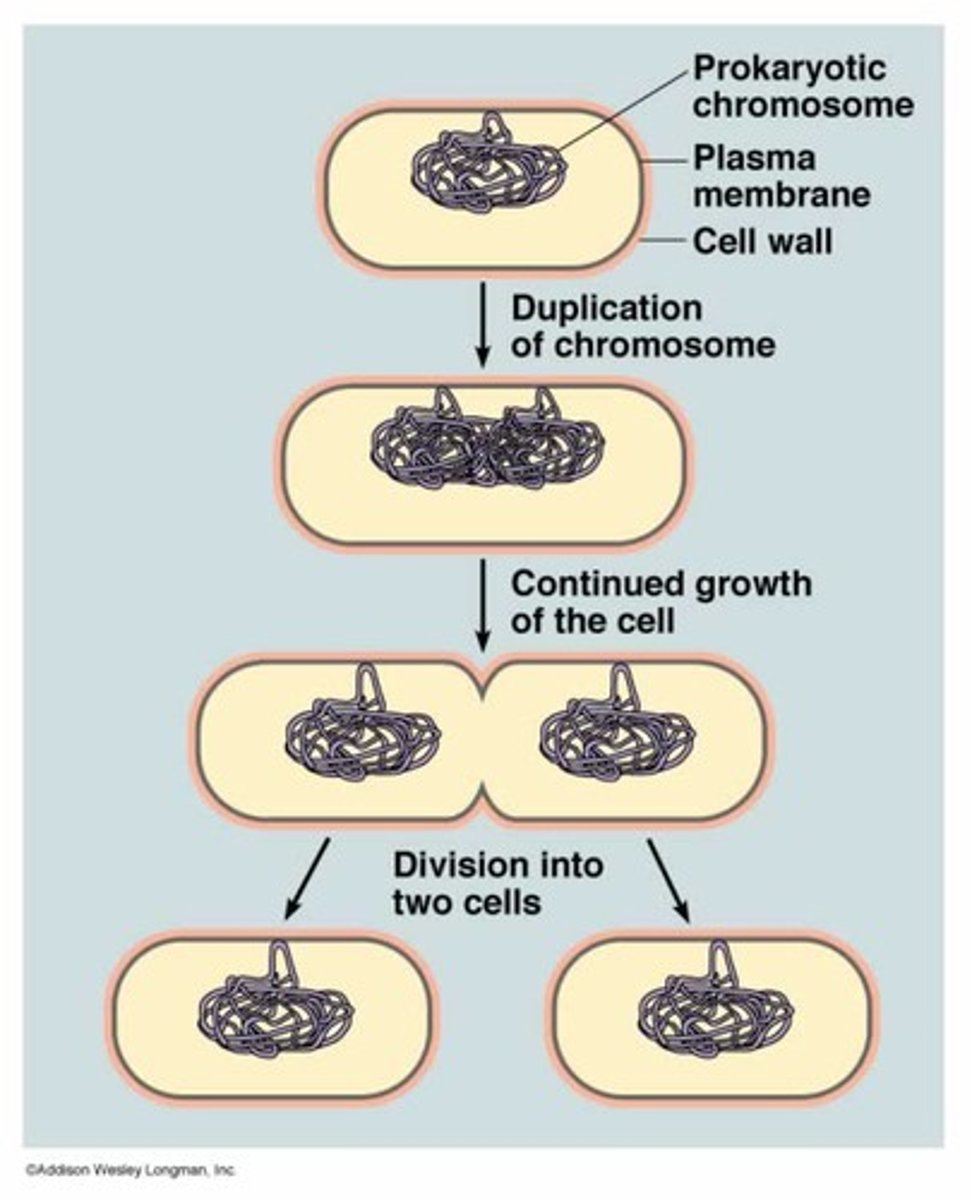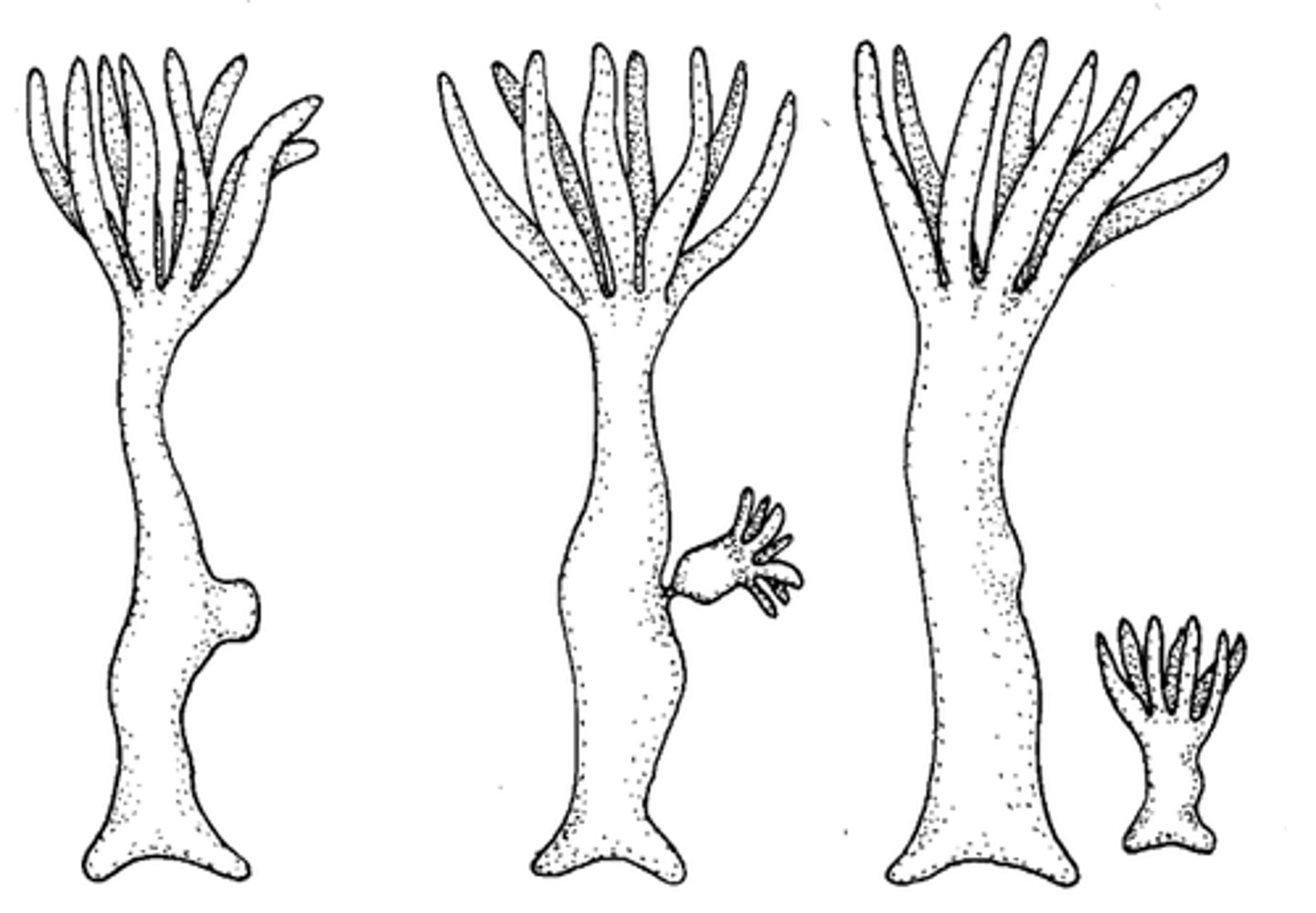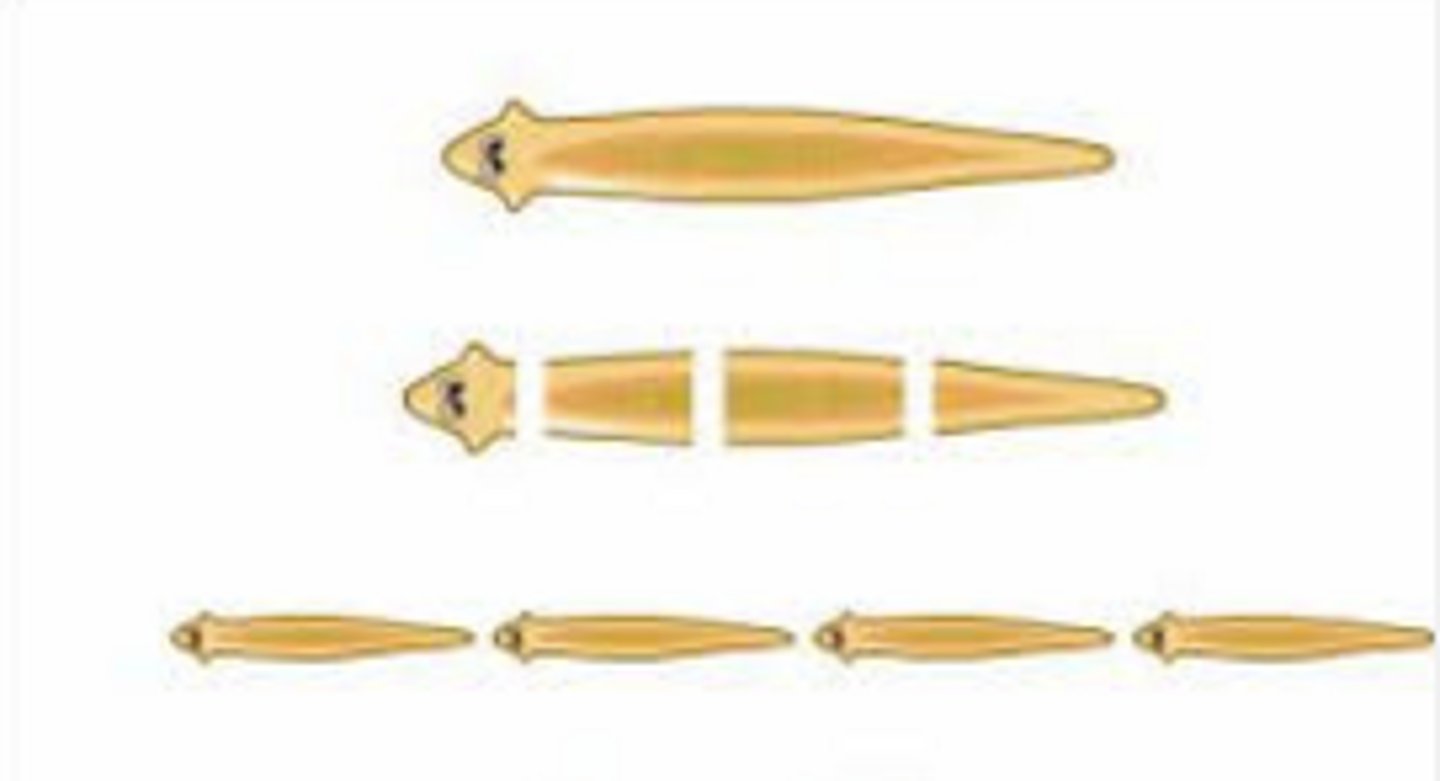asexual and sexual reproduction
1/29
There's no tags or description
Looks like no tags are added yet.
Name | Mastery | Learn | Test | Matching | Spaced |
|---|
No study sessions yet.
30 Terms
what is asexual reproduction
Asexual reproduction is a form of reproduction in which one parental organism produces offspring that are genetically identical to each other and to the parent.
The daughter cells are clones.
what is secual reproduction
Sexual reproduction involves genetic contributions, in the form of gametes, from two parental sources to their offspring.
Fertilisation of the egg may occur internally or externally.
What are the types of asexual reproduction
-Binary Fission - Budding
-Fragmentation - Parthenogenesis
-Spore Formation - Vegetative Propagation
what cells does asexual reproduction occur in
Asexual reproduction occurs in both prokaryotes (bacteria and archaea) and eukaryotes (animals, plants and fungi).
In prokaryotes asexual reproduction involves binary fission, while in eukaryotes asexual reproduction involves mitosis.
binary fission
Main form of asexual reproduction in bacteria. The cell splits into 2, with equal division of genetic material and organelles via the process of cytokinesis.

budding
Budding is a form of asexual reproduction in which a new organism develops from an outgrowth or bud. The new organism remains attached as it grows, only separating from the parent organism when it is mature.
E.g. Hydra, coral, sponges, yeast

fragmentation
Fragmentation is a form of asexual reproduction in which an organism is split into fragments. Each of these fragments develop into mature, fully grown individuals.
E.g. Molds, Lichens, Sea stars, Planarians →

parthogenesis
Parthenogenesis ('virgin birth') is a type of asexual reproduction in which the offspring develops from unfertilized eggs.
It is particularly common amongst arthropods, but can also be found in some species of fish, amphibians, birds, and reptiles, but not in mammals. Parthenogenetic development also occurs in some plants species, such as roses and orange trees.
spore formation
Spores are reproductive cells capable of developing into a new individual without fusion with another reproductive cell.
When a spore lands in a suitable environment it will germinate.
E.g. Fungi, algae, some plants
Vegetive propagation
Although most plants normally reproduce sexually, many have the ability for vegetative propagation. Vegetative propagation (or vegetative reproduction) is a form of asexual reproduction in plants in which new organisms arise without production of seeds or spores.
methods of vegetative propagation
Methods of vegetative propagation include cutting, vegetative apomixis, budding and grafting.
Cutting is the most common artificial vegetative propagation method, where pieces of the "parent" plant are removed and placed in a suitable environment so that they can grow into a whole new plant.
advantages of asexual reproduction
- Faster
- More offspring produced
- Don't need to use energy finding a mate
- All good characteristics are passed on
- Large colonies can outcompete other organisms and increase chances of survival
- Every member of species can reproduce
- Don't need to rely on a vector (plants)
disadvantages of asexual reproduction
- Lack of genetic variety
- If conditions become unfavourable, all individuals could die
- All bad characteristics or mutations are passed on
internal fertilisation
Internal fertilisation occurs when the sperm and egg join inside the parents' bodies.
external fertilisation
External fertilisation occurs when the sperm and egg join outside the parents' bodies.sec
sexual reproduction advantages
- Genetic Diversity
- Better equipped to survive in changing, unstable environmental conditions
sexual reproduction disadvantages
- Energy required to find a mate
- Slower
- Less offspring produced
- Only half of the population can reproduce
cloning
Cloning is the process of producing genetically identical cells, groups of cells or organisms asexually.
reproductive cloning
Reproductive cloning is the process by which a human or other organism is produced which is genetically identical to another human/organism.
therapeutic cloning
Therapeutic cloning is the first step of reproductive cloning and it is carried out by Somatic Cell Nuclear Transfer. Embryonic stem cells derived from therapeutic cloning can be instructed to form specialized cell types such as bone marrow. If the cells are placed back into the individual who gave the DNA for the Somatic Cell Nuclear Transfer, these cells are genetically identical and will not be rejected by the donor's immune system.
Similarities between asexual and sexual reproduction
-forms of reproduction
-involves plants,fungi, and animals
-produces offspring
Differences between asexual and sexual reproduction
one parent-> two parents
very little chance of genetic variation-> genetic variation in offspring
no formation of gametes-> formation of gametes
found in lower complex organisms (i.e bacteria)-> found in higher complex organisms (i.e mammals)
cell divides by fission, budding, or fragmentation-> cell divides by meiosis.
Generally creates a minimum of two offsprings -> creates a minimum of one offspring.
Social and ethical implications of cloning- arguments for
- cell therapy is used to treat patients with; leukemia, parkinson's disease, sever skin burns etc. thus saving lives and reducing pain
- Embryos left over from IVF treatment or those that have stopped developing could be used for treatment instead of being destroyed
-stem cells are taken before the embryos develop nerve cells so they cant feel pain
-risk of tissue rejection during tissue transplant reduced.
Social and ethical implications of cloning- arguments against
-There are fears it may lead to reproductive cloning and if embryos are not destroyed they will develop into a clone of the adult
-Use of embryonic stem cells involves creation and destruction of human embryos
-embryonic stem cells are capable of repeated cell division and may turn into tumours
- Every human embryo is a potential human being and should be given a chance of developing
asexual reproduction is best suited to
constant environments
what does SCNT stand for
somatic cell nuclear transfer
Mammalian clones have a shortened life expectancy, this is due to:
shortening of telomeres over time
Sexual reproduction in plants requires:
pollen and ovule
Outline the steps in SCNT
Obtain energy from an ovary and denucleate.
Remove genetic material from donor organisms somatic cell.
Using an electric charge,
insert the genetic material into the enucleated egg.
Stimulate the egg to divide on a culture.
Grow for 1 week.
Transfer the embryo to a surrogate.
Allow gestation to occur
With SCNT, which parent contributes the genetic material? explain
The organism that provided the genetic material from the somatic cell. The egg is the vector to transfer the genetic material and provide the initial nutrients required for rapid mitosis, but as the nucleus has been removed, does not contribute any genetics